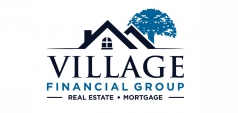
|
Follow Me On: |
 |
Rick R. Johnson Cert. Mort. Advisor/Mort. Broker/Solution Expert Village Financial Group, Inc. Phone: 916-367-3738 Fax: (916) 295-1451 License: NMLS #360614, CalBRE# 01711076 Rick@RJ4Loans.com www.RJ4Loans.com |
 | ||
| ||||
January 2022

|
Home Equity Loans and HELOCs
One of the many benefits of owning a home is the accumulation of equity. Home equity grows over time by paying the mortgage and from rising market values. After a historic rise in housing prices over the last 20 months, many homeowners now have an opportunity to borrow against this equity. The cash can be used to pay down other debt, start a new home project and more. How do you calculate home equity? To calculate home equity, subtract the mortgage balance from the current market value. The remainder is the equity where a portion can be borrowed. To qualify, a lender will look at a borrower's loan-to-value, income, asset, and credit history to determine how much equity can be used and, in some cases, how the funds can be disbursed. Home Equity Loan or HELOC – what's the difference? Home Equity Loan: This is a fixed amount or lump sum which is disbursed at closing. Interest rates and terms are fixed, and the payments are made monthly over set number of years. Depending on lender guidelines and borrower qualifications, payments can be made directly to debtors or disbursed to the borrower who can choose where the money will go. Home Equity Loans are a great way to use equity to pay for expenses however, if more money is needed after the loan disbursement, the borrower must apply for a refinance for additional funds. HELOC (Home Equity Line of Credit): These are revolving credit lines with adjustable interest rates. A borrower has the flexibility to draw from the line up to the approved limit. HELOC draw periods last for a set number of years and during that time, payments are typically interest only. Once the draw period ends, the remaining balance must be paid. The loan payments will then include principal and interest. HELOC's are a flexible way to leverage equity without having to draw a large lump sum all at once. Bottom line: Both loan types allow homeowners to use the equity from their home. To find out which option to choose, talk with a loan originator who can provide more detail about home equity loans and how they work. Source: Mortgage Market Guide | ||||||||||||||||||||||||||||||
You are receiving a complimentary subscription to YOU Magazine as a result of your ongoing business relationship with Rick R. Johnson. While beneficial to a wide audience, this information is also commercial in nature and it may contain advertising materials. INVITE A FRIEND to receive YOU Magazine. Please feel free to invite your friends and colleagues to subscribe. SUBSCRIBE to YOU Magazine. If you received this message from a friend, you can subscribe online. UNSUBSCRIBE: If you would like to stop receiving emails from Rick R. Johnson, you can easily unsubscribe. Village Financial Group, Inc. |
1212 Suncast Lane, Suite 1 El Dorado Hills, CA 95762 Powered by Platinum Marketing © Copyright 2024. Vantage Production, LLC. | |||||||||


